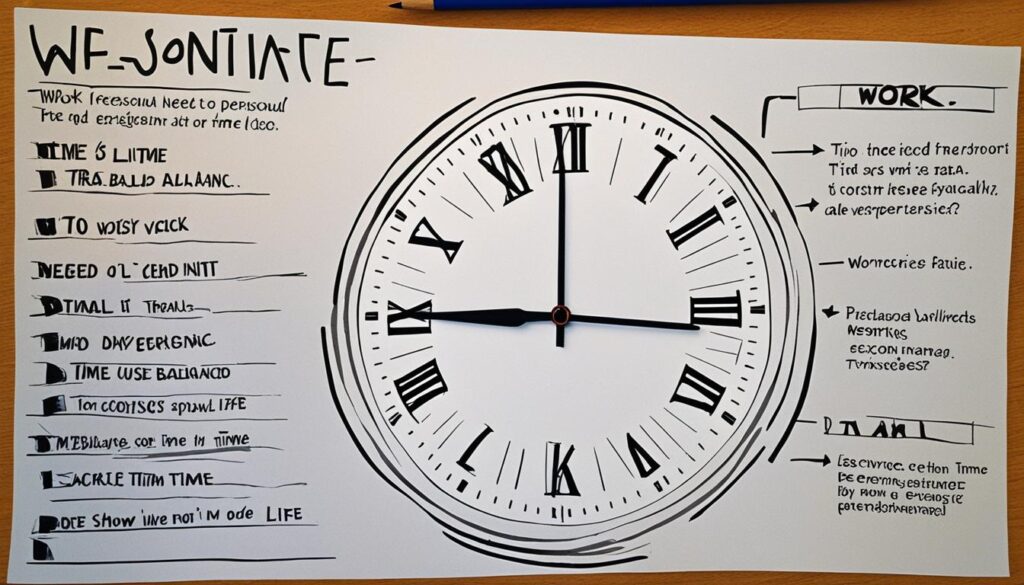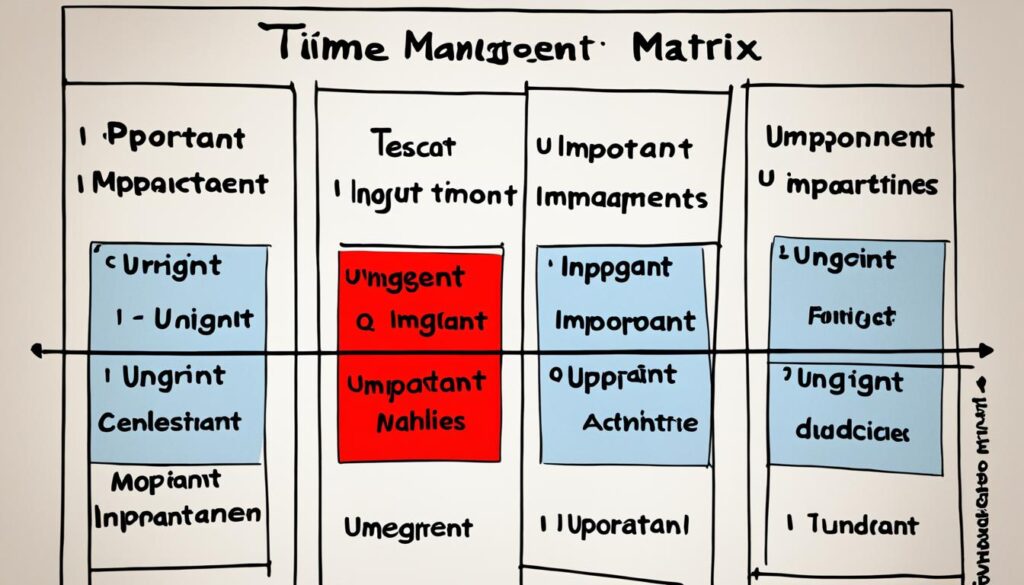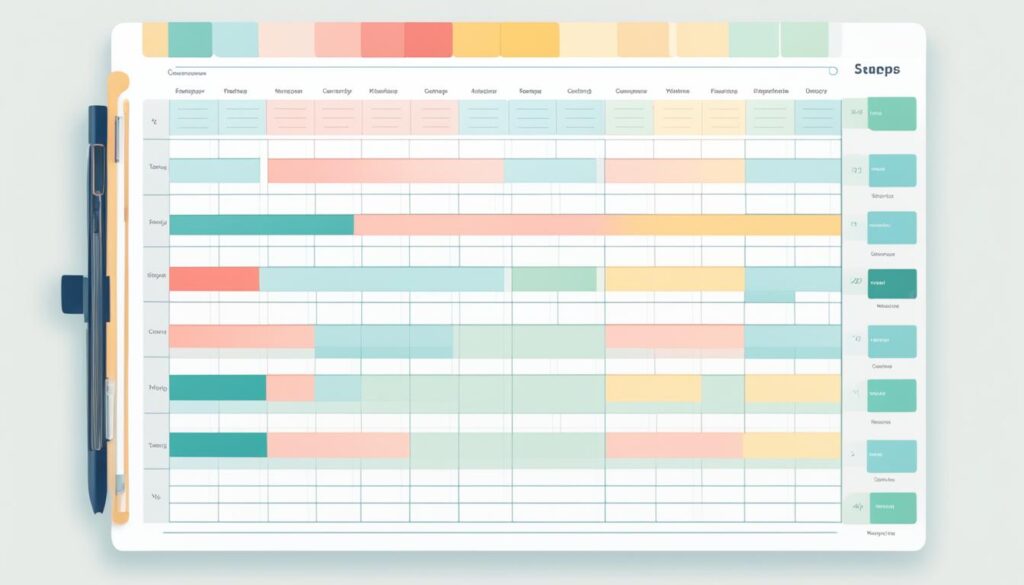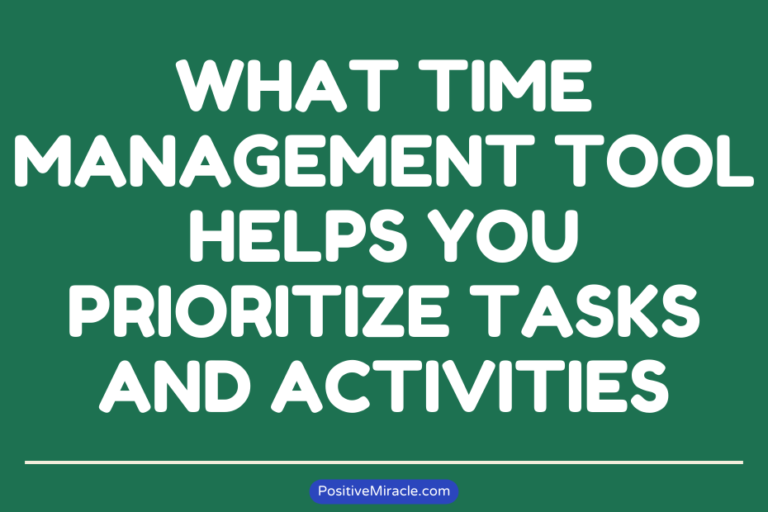Master Team Time Management for Peak Performance

“Time is what we want most, but what we use worst.” – William Penn
Time is a precious resource that holds the key to team success. The way we manage our time directly impacts our productivity, energy levels, and overall sense of accomplishment. For teams to reach their full potential and achieve peak performance, effective team time management is crucial.
Managing team time involves more than simply scheduling meetings and appointments. It requires a deep understanding of how time is currently being spent, setting priorities, utilizing planning tools, getting organized, and delegating tasks. By implementing these strategies, teams can optimize their time and unlock their true potential.
Join us as we explore the essential strategies for mastering team time management and discover the path to enhanced productivity and success.
Key Takeaways:
- Understanding how time is currently being spent is crucial for effective team time management.
- Setting priorities helps individuals and teams focus on accomplishing the most important tasks.
- Using the right planning tools can significantly improve productivity and organization.
- Getting organized and delegating tasks are essential for optimizing team time.
- By mastering team time management, teams can experience increased efficiency and reduced stress.
Know How You Spend Your Time
Keeping track of how you spend your time is a powerful tool for understanding and optimizing your productivity. By maintaining a time log, you can gain valuable insights into how your day is structured and identify any time-consuming tasks that may be hindering your efficiency.
To create a time log, simply record your activities in 15-minute intervals over the course of a week or two. Be diligent in capturing each task, as even seemingly small activities can add up and consume significant chunks of time. By accurately documenting your daily activities, you’ll be able to evaluate the results and make informed decisions on how to better manage your time.
Once you have completed your time log, take a closer look at the data and identify the tasks that consume a significant amount of your time. Evaluate whether those tasks align with your priorities and goals. This evaluation will help you determine if you are investing your time in the most important activities that contribute to your personal and professional growth.
After evaluating the results of your time log, you can begin planning your schedule more effectively. With a clear understanding of how you currently spend your time, you can allocate specific blocks for the most time-consuming tasks and ensure that they align with your priorities. Additionally, identifying your most productive time of day allows you to schedule high-priority tasks during that period for maximum efficiency.
Using a time log to track and evaluate your activities provides valuable insights and empowers you to make informed decisions about how to optimize your time. By understanding how you spend your time and prioritizing tasks accordingly, you can work towards maximizing your productivity and achieving your goals.

Time Log Example
| Time | Activity |
|---|---|
| 08:00 AM – 08:15 AM | Morning routine (shower, breakfast, etc.) |
| 08:15 AM – 09:00 AM | Commute to work |
| 09:00 AM – 10:30 AM | Writing project |
| 10:30 AM – 10:45 AM | Short break |
| 10:45 AM – 12:00 PM | Meeting with team |
| 12:00 PM – 01:00 PM | Lunch break |
| 01:00 PM – 02:30 PM | Client calls |
Set Priorities
Effective time management requires setting priorities. By clearly identifying urgent tasks and important tasks, you can ensure that your time and energy are spent on the most impactful activities. One helpful tool for setting priorities is the Time Management Matrix, developed by Covey, Merrill, and Merrill. This matrix categorizes tasks into four quadrants based on their urgency and importance:
| Quadrant | Urgency | Importance | Example Tasks |
|---|---|---|---|
| Quadrant 1: Urgent and Important | High | High | Meeting deadlines, resolving crises, addressing emergencies |
| Quadrant 2: Not Urgent but Important | Low | High | Long-term planning, skill development, relationship building |
| Quadrant 3: Important but Not Urgent | Low | Low | Unnecessary meetings, distractions, interruptions |
| Quadrant 4: Not Important | Low | Low | Procrastination, trivial tasks, time-wasting activities |
It is important to allocate less time to activities in Quadrants 3 and 4, which are not important or have lower priority. Instead, focus your efforts on activities in Quadrants 1 and 2, which have a high impact on your goals and objectives. By doing so, you can gain greater control over your time and accomplish tasks that truly matter.
To implement this prioritization system effectively, create a prioritized “to do” list based on the Time Management Matrix. Start by listing down all your tasks, and then assign each task to its corresponding quadrant. This will help you visualize your priorities and make informed decisions about where to invest your time and energy.
Create a Prioritized “To Do” List
A prioritized “to do” list serves as a guide for your day, ensuring that you focus on the most important and impactful tasks first. Here are some steps to help you create a prioritized “to do” list:
- Write down all the tasks you need to accomplish.
- Assign each task to its corresponding quadrant in the Time Management Matrix.
- Rank the tasks within each quadrant based on their importance and urgency.
- Start with the tasks in Quadrant 1 (urgent and important) and Quadrant 2 (not urgent but important).
- Continue working through your list, completing tasks in order of priority.
By following a prioritized “to do” list, you can stay focused on what truly matters and avoid getting overwhelmed by less critical tasks. This approach empowers you to make intentional choices about how you allocate your time, allowing you to achieve more with less stress.

Use a Planning Tool
Time management experts emphasize the importance of utilizing a personal planning tool to enhance productivity. These tools come in various forms such as planners, calendars, phone apps, and notebooks. The key is to find a planning tool that aligns with your individual preferences and consistently utilize it to maximize its benefits.
There are different types of planning tools available to cater to specific needs:
1. Time Trackers
Time trackers help you gain awareness of how you spend your time. By tracking your activities, you can identify time-consuming tasks and make informed decisions about where to allocate your time more efficiently.
2. Time Savers
Time savers are designed to automate or streamline repetitive tasks, freeing up your time for more important activities. These tools can include automation software, keyboard shortcuts, templates, and other productivity hacks.
3. Task Managers
Task managers assist in prioritizing and organizing your tasks effectively. They enable you to create to-do lists, assign deadlines, set reminders, and track progress. With a task manager, you can stay on top of your responsibilities and ensure nothing falls through the cracks.
4. Habit Developers
Habit developers are tools that help you develop and maintain productive habits. They provide structure, reminders, and tracking features to assist you in building positive routines and eliminating bad habits that hinder your productivity.
By utilizing these planning tools, you can gain better insight into your time usage, enhance productivity, prioritize and organize tasks, and develop healthier habits. Choose the tools that resonate with your needs and empower yourself to take control of your time management.

| Planning Tool Type | Key Features |
|---|---|
| Time Trackers | Track time spent on tasks and activities Identify time-consuming tasks Improve time allocation and efficiency |
| Time Savers | Automate or streamline repetitive tasks Increase productivity Free up time for more important activities |
| Task Managers | Create prioritized to-do lists Set deadlines and reminders Track task progress |
| Habit Developers | Assist in building positive habits Provide structure and reminders Track habit development progress |
Conclusion
Mastering team time management is crucial for achieving peak performance and productivity. By implementing effective team scheduling, group productivity planning, and collaborative time tracking strategies, your team can optimize their time and enhance their overall efficiency.
One key aspect to successful team time management is knowing how time is spent. By keeping a time log and evaluating the results, you can identify time-consuming tasks and assess whether time is being invested in the most important activities. This knowledge allows you to make informed decisions and allocate time wisely.
Setting priorities is another essential strategy. By using tools such as the Time Management Matrix, you can categorize tasks based on urgency and importance. This helps you focus on high-priority tasks, while ensuring that important but not urgent activities receive the attention they deserve.
Utilizing planning tools is also crucial for effective team time management. Personal planning tools, such as time trackers, task managers, and habit developers, provide a structured approach to organizing and prioritizing tasks. These tools enable you to track progress, manage deadlines, and develop efficient habits, ultimately supporting your team’s productivity.
By mastering team time management, your team can achieve improved efficiency, reduce stress levels, and experience a sense of accomplishment. Implement these teamwork efficiency strategies today and unlock your team’s full potential for success.
FAQ
Why is time management important for team success?
Time management is crucial for team success as it leads to increased productivity, reduced stress, and a sense of accomplishment. By efficiently managing time, teams can optimize their performance and achieve peak results.
How can I understand how I spend my time?
Keeping a time log helps individuals understand how they are currently using their time. By recording activities in 15-minute intervals for a week or two, it becomes easier to identify the most time-consuming tasks and determine if time is being invested in the most important activities.
What is the Time Management Matrix?
The Time Management Matrix categorizes activities into four quadrants: urgent and important, not urgent but important, important but not urgent, and not important. By categorizing tasks, individuals can prioritize their activities and focus on what is truly important.
What planning tools can I use for effective time management?
There are various planning tools available, such as planners, calendars, phone apps, and notebooks. The key is to find a planning tool that works best for your preferences and consistently use it. Time trackers, time savers, task managers, and habit developers are some examples of planning tools that can help individuals increase productivity and create healthy habits.
How can team time management enhance productivity?
By implementing strategies such as knowing how time is spent, setting priorities, using planning tools, getting organized, and delegating tasks, teams can optimize their time and enhance productivity. Effective team time management leads to improved efficiency, reduced stress, and a sense of accomplishment.






